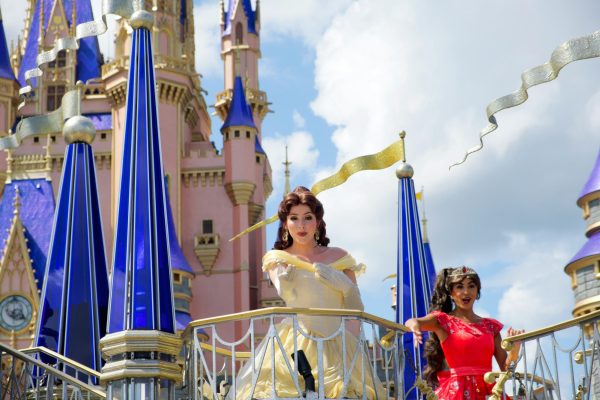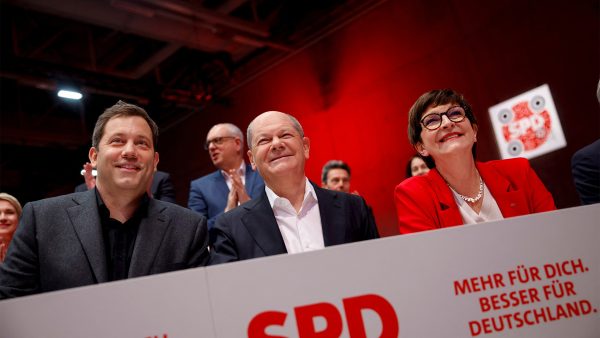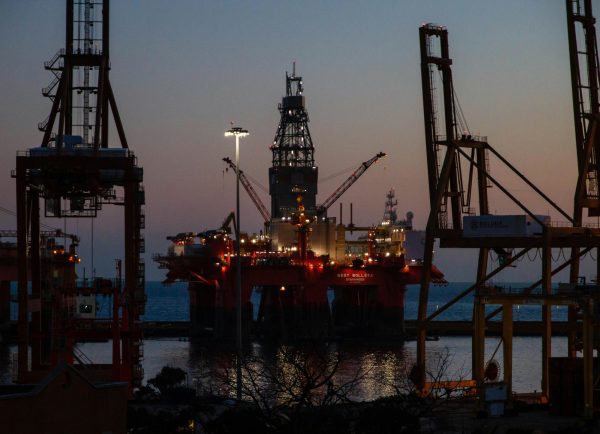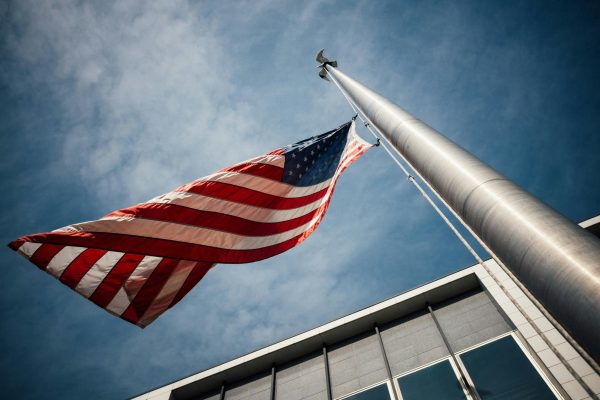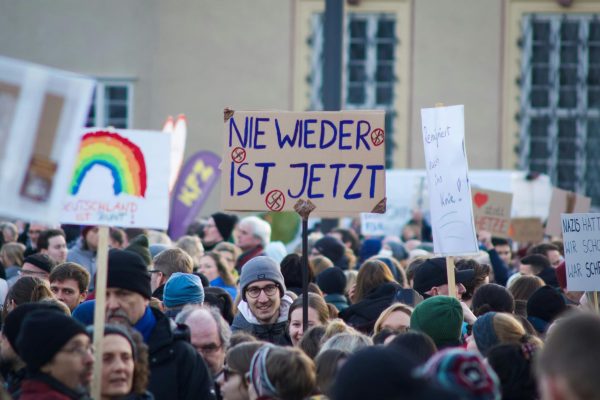What Do the Differences in the News Coverage of the Protests of Hong Kong and Barcelona Reveal About the Current State of the Western Media?
Hong Kong and Catalonia: an analysis of two separatist movements and their portrayal in the western media
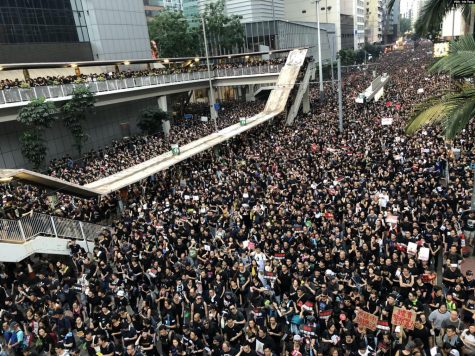
Protesters in black in Hong Kong, large amount of people forces police to open up more roads.
Taken from Wikimedia Commons
If you have been following the news these last few months you have probably heard of the political unrest in Hong Kong. If you have paid a little more attention down your newspaper’s news feed you probably also know about the Catalonian protests. These two movements arose in different geopolitical situations and by distinct triggers, however, if we superpose them, we find evident similarities. These similarities allow us to create a profile for both protests that will help guide us analyse and contrast how western media depicts the two movements.
The Hong Kong protests started when Carrie Lam, the Chief Executive of Hong Kong proposed a now discarded extradition law with mainland China. Hong Kong was a British colony until 1997 when it was returned to China. It has stayed an autonomous region inside China’s territory with its own judicial system, government, and economic freedom. However, that is only guaranteed until 2047, when China will most likely absorb the territory merging its political systems with those of the central government. Furthermore, Hong Kongers have cultural differences as significant as written and spoken language and their education system. Moreover, Hong Kong also possesses a strong economy which is likely to be threatened by the Chinese economic system if they ever merge. Due to escalating violence, the autonomy of Hong Kong has been put at risk as China’s president threatened that Hong Kong’s “one country, two systems” was being “challenged”. The protests started on March 31st, 2019 and are still going strong with a clear escalation of violence from both the police and the protesters.
The Catalan protests started when the sentence for the leaders of the 2017 referendum was sentenced from 9 to 13 years in jail. This referendum was agreed upon by the majority of the Catalan people but did not have the state’s approval and was therefore illegal under the veil of the Spanish Constitution. The aim of the protest is to advocate for the release of the Catalan politicians and more political freedom for Catalonia, demanding that the state allows an official referendum regarding the independence of the autonomous territory. Catalonia also experiences a great cultural divide with the rest of Spain as well as different education and languages. The protests in Catalonia started on October 15th. Although there hasn’t been as much violence as in the Hong Kong ones, the atmospheres surrounding the two protests are similar.
At this point, if you hadn’t noticed the parallels between the two protests before, you should now be able to distinguish the shared characteristics. While I am aware that there are also major differences between the protests, they are similar enough that we are able to compare them.
The role of the media in the Western world is one of great controversy; Media does not solely reflect society, it also influences public opinion. It follows that the reception that the media has of current events can be used to paint a picture of political and economic interests and the general opinion of the population in those regions. Because of that, the coverage that the media has done on the two protests can reveal a great deal of the current political and social landscape in the north-western hemisphere.
The first main difference is that there is an imbalance in the amount of attention that they have received. While the Hong Kong protests have easily been the headline of major newspapers, the Catalan ones have struggled to make the cover pages. As someone who has paid attention to both of them and recognised the magnitude of the two protests, I wonder why political defiance inside of Europe has gone relatively unnoticed compared to the one in Hong Kong. The biggest concentration in Barcelona consisted of around 600,000 people according to the local police, in Hong Kong, those same numbers were around 338,000. Both numbers are immensely significant in the population’s discontent with their current situation, but we cannot ignore that in Spain, the numbers were considerably higher than in Hong Kong. So, why do we know every little detail about protests that are happening thousands of kilometres away, while we know basically nothing about those happening right next to us?
It has certainly become a trend to antagonise the Chinese government; Their policies have been criticized by many western politicians and journalists for being too authoritarian. At the same time, its fast economic growth poses a threat to the US and the Western-dominated economic market. The Hong Kong protests presented itself as a great outlet to channel this fear shared by the public and the press. Hong Kongers were described as freedom fighters (Fox Media) and pro-democratic protesters (BBC), both terms with a blatant positive connotation, which reinforces the warm welcome that these protesters and activists received in the western media. It is very likely that this same media response has actually fueled the protests and strengthened the convictions of the protesters to keep advocating for their cause. Meanwhile, the Catalan protesters are depicted as radicalized (The New York Times) and as separatists (BBC), proving once more the obvious bias of the media favouring the Hong Kongers, or more accurately, against the Chinese government. Moreover, the media faces a paradox when faced with violent protests. There is a strong correlation between the violence of a protest and its news coverage, so in the end, peaceful demonstrations end up overshadowed by small riots. This correlation also incentivizes rioters to keep distorting public order as their message is amplified when they do. The media should not aim the microphone at those who display violent behaviour, instead, it should shift the focus to those trying to keep the protests peaceful.
While Hong Kong has found itself in the focus of the new proxy war being fought between two different ideologies that have been fighting for more than half a century, Catalonia represents a threat to the moral high ground that Europe & the US seem to be so proud of having. The similarities between the protests shed a light on the problems within a Union that is supposed to be the stronghold of democracy. Protesters in Spain advocating for more rights is not a story that the media feels compelled to pursue. George Orwell talked about the dangers of prevailing orthodoxy in his book Animal Farm. This concept is meant to illustrate how “Unpopular ideas can be silenced, and inconvenient facts kept dark, without the need for any official ban”. These ideas are silenced not because they are untrue, but simply because there is a certain agreement, by the public and the media, that society would not benefit from knowing them. Now, this may sound oddly familiar, the Chinese government is commonly accused to be actively controlling the media and filtering the information that reaches the Chinese population. As a matter of fact, control of the media is one of the reasons the government of Xi Jinping does not hold that moral high ground we talked about earlier on. It is true that the internet provides freedom of information in Europe and the US, but George Orwell’s ghost warns us of the dangers of not questioning the status quo. The media and the public must have a reluctant relationship, neither should become too tame to the other or we might willingly enter a dictatorship of prevalent orthodoxy. Hong Kong and Catalonia are an example of the dangers of this phenomenon. It is everyone’s responsibility to show to the media that it should not mirror political ideologies.
Although it may be too late to change the current situation between these two protests, we should still see them as a cautionary tale about the dangers of the media focusing more on its role of shaping society rather than reflecting its problems. I recognise that it’s impossible to separate political interests with news sources, but if the public recognises the importance of being critical, perhaps we can stop painting the world in black and white and understand each other better.




